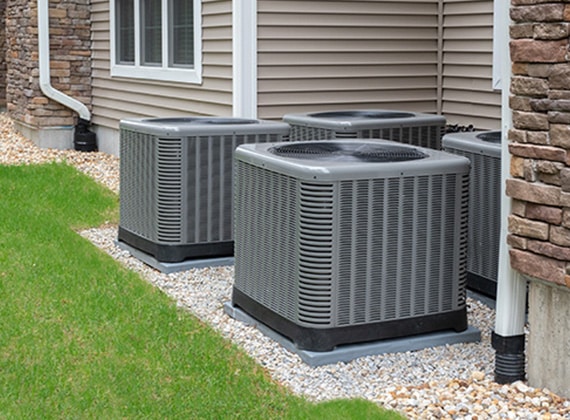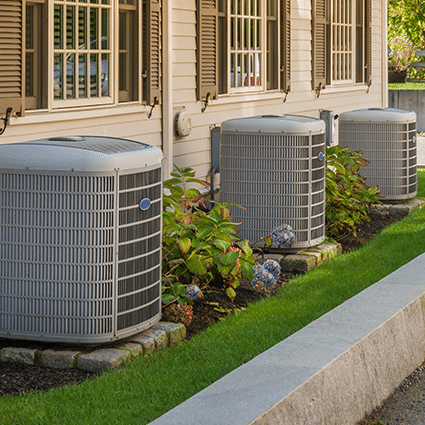While escaping Austin’s scorching heat and high humidity is vital, ensuring that your energy bills stay affordable is equally important. One of the best solutions to manage these costs is to invest in an energy-efficient air conditioner. If you’re keeping a close watch on electricity rates in Austin, particularly during periods of escalating heat and humidity, it might be the right time to explore upgrading your cooling system.

As the summer season in Texas approaches, your air conditioner becomes crucial for maintaining comfort within your home. Our team of professionals offers many different services to keep your home comfortable in the Texas heat. Call ABA Austin for air conditioning maintenance, repairs, and replacement. Looking for a new unit? Let ABA Austin guide you through important information to help you choose the most suitable energy-efficient air conditioner for your home.
Exploring Different Air Conditioner Options
When it comes to cooling technology, most units function similarly. However, they are designed to cater to different living situations. Choosing the right type of air conditioner depends on factors such as your home’s layout and your budget.
Central Air Conditioners
Central air conditioners are designed to cool multiple rooms, typically an entire home, simultaneously. These systems are controlled through a wall-mounted thermostat, and cool air is circulated through a network of ducts and vents until the desired indoor temperature is achieved.
Pros of Central Air Conditioning:
- Whole-home comfort: A professionally installed central air system maintains consistent temperatures throughout the entire living space.
- Quiet operation: Since the noisiest components are typically located outdoors or in utility rooms, basements, or attics, central air systems tend to be quieter than window units or mini-split systems.
- Improved air quality: Central air conditioners constantly filter and replace indoor air, removing irritants, allergens, dust, and pet hair.
Cons of Central Air Conditioning:
- Ductwork requirement: Installing ductwork can be more expensive than the central air system, making it a costlier option for older homes that need modernization.
- Initial cost: Compared to window units and mini-split systems, central air conditioning is generally more expensive for both purchase and installation.
- Energy inefficiency: Central air systems cool the entire home to the same temperature, resulting in potential energy wastage when trying to cool unoccupied rooms.
Mini-Split Systems
While mini-split systems employ the same basic technology as central air conditioners, their design is quite different. Each cooled room has its own evaporator and fan unit, typically installed high on the wall, while a single outdoor condenser and compressor unit serves all the units.
Pros of Mini-Split Systems:
- Zone control: Each evaporator and fan has its own thermostat, allowing you to save on energy costs by adjusting temperatures higher in unoccupied rooms.
- No ductwork needed: As mini-split systems don’t require ductwork, they can be a more affordable option for home additions or retrofitting older homes with a central air experience.
- Aesthetically pleasing: Wall-mounted units offer a sleeker appearance compared to window units and don’t obstruct the entire window.
Cons of Mini-Split Systems:
- Energy efficiency: Generally, mini-split systems are less efficient than central air systems. However, due to the absence of cooling loss through ductwork and the ability to control individual zones, homeowners can compensate for this difference by being mindful of thermostat usage.
- Installation costs: Installation expenses increase with each evaporator unit, so if you want to cool multiple rooms, installation costs can be higher than central air conditioning.
- Design preferences: Although sleeker than window units, mini-split systems may not provide the nearly invisible cooling of central air. Central air may be better for you if you want completely concealed cooling equipment.
Window Units
Window units are air conditioners readily available for purchase at various hardware and department stores.
Pros of Window Units:
- Cost-effective: Window units are significantly more affordable than central air or mini-split systems and don’t require professional installation.
- Efficient & affordable: Opting for high-efficiency window units usually doesn’t incur a substantial price increase, yet they can provide long-term savings.
- Flexibility: Window units can be conveniently placed anywhere near an exterior window and within reach of an electrical outlet.
Cons of Window Units:
- Aesthetics: Window units obstruct the view of the outdoors and may cause condensation to drip below, which may not be visually appealing to all homeowners.
- Noise: Due to the proximity of all components to the living space, window units tend to generate more noise compared to alternative options.
- Warm air infiltration: Improper installation can lead to an inadequate seal around the window unit, allowing warm air and even pests to enter the room.
- Security concerns: A window housing an air conditioner is less secure than a closed and locked window.

Choosing the Right Size Air Conditioner for Efficiency
When purchasing a new air conditioner, size plays a crucial role. “size” refers to the physical dimensions and the unit’s cooling capacity, typically measured in British thermal units (BTUs). For more information on choosing a unit that’s the right size, read our article on the Right Size AC for Your Home.
Size is important for two key reasons. If an air conditioner is too small, it will run continuously without adequately cooling the space, resulting in high energy bills and an uncomfortable indoor environment. On the other hand, if it is too large, it will cool the house too quickly. An oversized air conditioner leaves excess moisture, creating a damp and clammy atmosphere.
Choosing the Right Energy-Efficient Air Conditioner
Opting for an energy-efficient air conditioner can bring significant benefits, but how can you ensure you make the right choice? The key lies in paying careful attention to the product labels. By considering these labels and certifications, you can make an informed decision when selecting an energy-efficient air conditioner, promoting environmental sustainability and long-term cost savings.
Window Units
All new window units have an EnerGuide label that provides information about their energy consumption. You’ll also find the ENERGY STAR symbol attached for exceptionally efficient models.
EnerGuide Label
The EnerGuide label allows consumers to compare different models. It details the unit’s energy usage in kilowatt-hours and how it compares to more and less efficient models.
ENERGY STAR Symbol
An ENERGY STAR-certified window unit consumes 10 percent less energy than a standard model. This reduction in energy usage translates to lower utility bills and savings in your pocket.
Window units earn the ENERGY STAR symbol based on their Combined Energy Efficiency Ratio (CEER). The higher the CEER, the more energy-efficient the unit is. The minimum CEER required for ENERGY STAR certification varies depending on the unit’s size, ranging from approximately 12 for smaller units to about 10 for larger units.
Central Air Conditioners
Central air conditioners utilize the Seasonal Energy Efficiency Ratio (SEER), similar to CEER. A higher SEER indicates greater efficiency. Central air conditioners with a SEER of 15 or higher qualify for ENERGY STAR certification and, on average, consume eight percent less energy than non-certified systems. Please read our article on updated SEER Regulations.
Notable Features of an Energy-Efficient Air Conditioner
Several energy-saving features are worth considering when searching for a new energy-efficient air conditioner. Considering these noteworthy features, you can enhance your air conditioning system’s energy efficiency and convenience, promoting a comfortable living environment while reducing environmental impact and utility costs. Here are some features that can save you money in the long run:
Programmable Temperature
Many modern window units come equipped with a digital temperature display that enables you to set your desired temperature. Once the unit reaches that temperature, it will automatically shut off. This feature provides convenience and contributes to energy savings by preventing the unit from running unnecessarily.
Energy-Saving Mode
Certain window units offer an energy-saving or economy mode that turns off the fan when the space has been adequately cooled. Although this mode may result in reduced air circulation, if the unit allows you to program your desired temperature, the fan will resume operation automatically when the cooling mode is reactivated.
Wi-Fi-Enabled Smart AC
The most advanced air conditioners can connect directly to your home’s Wi-Fi network, enabling you to control the system remotely through a smartphone or tablet. Smart systems provide the convenience of customizing cooling schedules, and some models can even learn your preferences over time, intuitively saving you money. An ENERGY STAR-certified connected or “smart” thermostat can save at least 8 percent of the energy used for heating and cooling your home.
Contact Us for Air Conditioner Installation
As air conditioner technology continues to advance, the availability of energy-efficient and user-friendly units has increased. Upgrading your cooling equipment is a wise decision for saving money, but the potential for even greater savings lies in finding the best energy deal. By taking these steps, you can maximize your energy efficiency and financial benefits when it comes to your cooling needs. If you need help choosing a new unit or replacing your current system, call our ABA Austin experts today!

